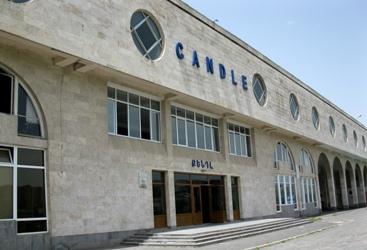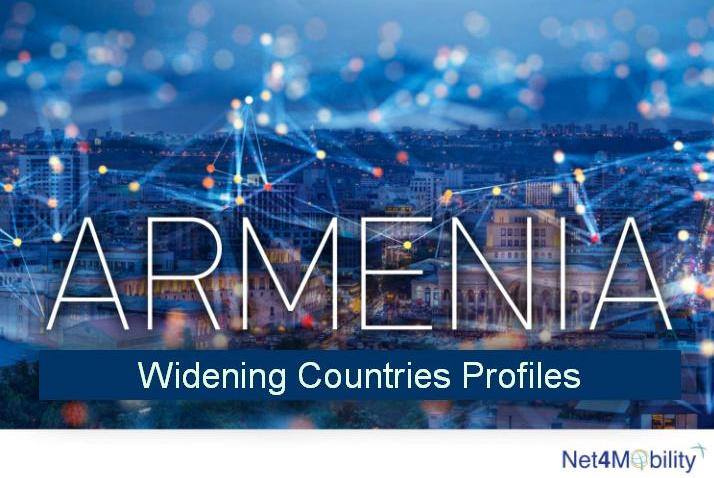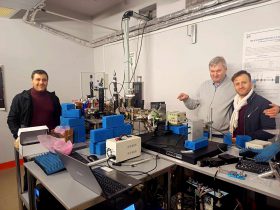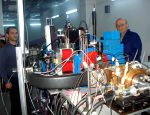August 11, 2016
The electrical and physical properties of silicon crystals under the irradiation of ultrashort (sub-picosecond) electron pulses of AREAL 5 MeV electron accelerator have been studied by the experimental team headed by Prof. Hrant Yeritsyan from A.I. Alikhanyan National Science Laboratory (Yerevan Physics Institute). The study results have been published in:
- H. N. Yeritsyan et al, The Influence of Pico-Second Pulse Electron Irradiation on the Electrical-Physical Properties of Silicon Crystals, Journal of Modern Physics, 7, 1413-1419, 2016. (http://www.scirp.org/Journal/PaperInformation.aspx?PaperID=69584)
The processes, which take place in materials under irradiation can be roughly presented as a row of consequent stages. The first stage of radiation influence is ionization and excitation of atomic orbital electrons or an elastic transfer of irradiation energy to atoms; the collision time with atoms is estimated to be 0.1-1 femtosecond. Atoms and electrons with excessive energy and impulse come into interaction with other atoms and electrons of matter, losing their energy through this action. This stage is called “energy exchange” from primary exciting particle and transition of the system to a quasi-equilibrium state. The energy exchange corresponds to the value of coupling energy of atoms in matter, i.e., a few eV, and takes place very quickly. At inter-atomic distances this time is about 0.01-0.1 picosecond.
The next process, relaxation of excessive energy received by atoms and electrons in crystal, takes place at time which is typical for the period of atomic oscillations, i.e., 0.1-1 picosecond in solid states. In fact, at this stage relaxation leads the system to the initial state with minimum free energy and to the formation of different meta-stable primary radiation defects; the role of thermal movement of atoms in solids becomes significant. In comparison with conventional microsecond pulse beam irradiation, in irradiation experiments with sub-picosecond pulse beam the “radiation annealing” does not take place, because the thermal processes (duration 0.1-1.0 microsecond) do not have enough time to develop.
The main outcomes of the performed experimental study at AREAL are:
- The short, sub-picosecond pulse electron irradiation has a significant effect on the electrical-physical properties of silicon crystal with less radiation damage than longer electron pulses.
- The radiation defect formation in silicon crystal takes place in stages; at first phase defects are formed as vacancy and interstitial atoms, which subsequently gather into clusters.
- The study of temperature dependence of charge carrier mobility helped to reveal the scattering mechanism: scattering on the ionized impurities and on the radiation defects. At the same time it became possible to observe formation of point defects, followed by their cluster formation.
The results of ultrashort electron pulse irradiation experiments are an important stage towards the study of very fast processes during the interaction of the electrons with matter. The first experimental results on AREAL facility are also summarized in a recently published paper: V. M. Tsakanov et al, AREAL Low Energy Electron Beam Applications in Life and Materials Sciences, Nuclear Instruments and Methods in Physics Research A, 829, 248-253, 2016. (NIM-16)












